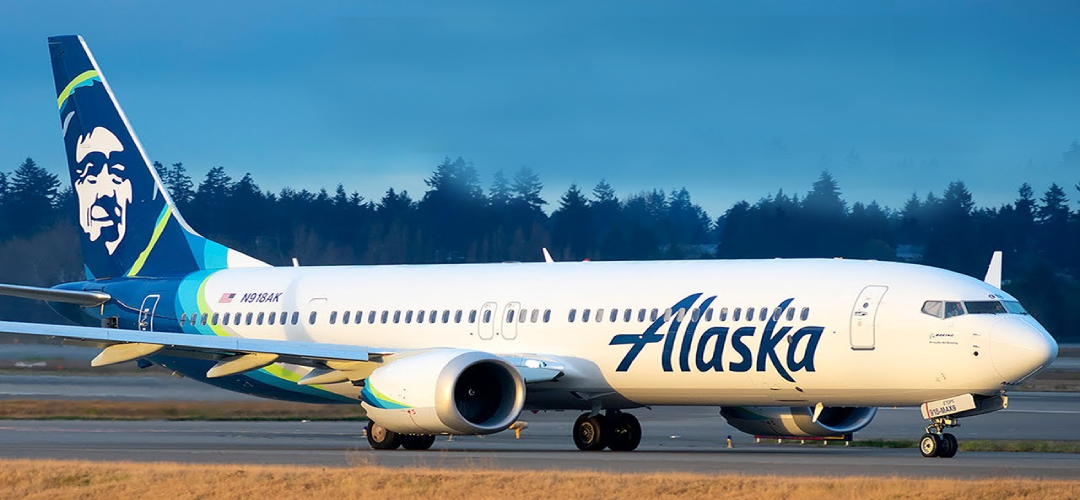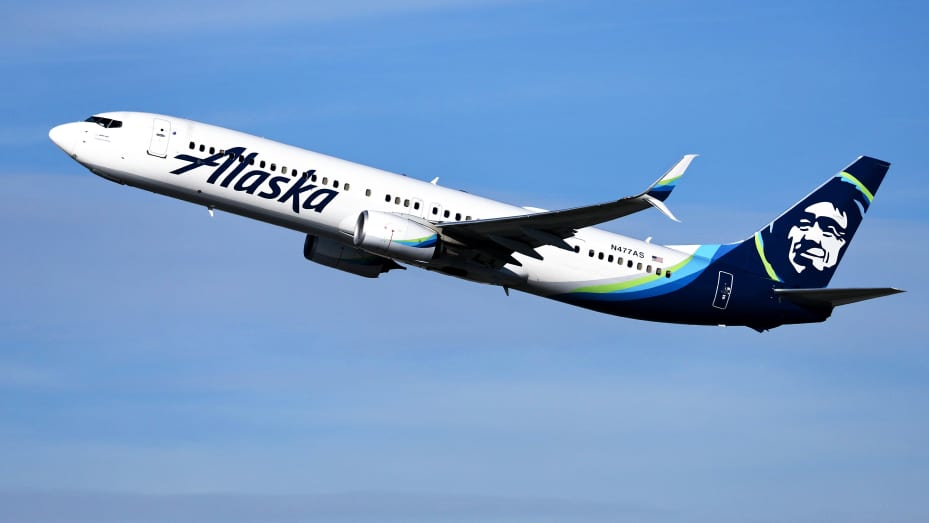Boeing: Back to Basics
January 27, 2024 | Expert Insights

Haunted by its past, Boeing finds itself once again in the hot seat, facing harsh scrutiny after a mid-air fuselage panel blowout on a 737 MAX 9. This near-disaster, barely five years after the fatal crashes of two other MAX planes, exposes a deeper crisis – one rooted in leadership failures and a cultural drift from its once-unmatched engineering excellence.
Watching it from the sidelines is its principal competitor, Airbus, laughing all the way to its bank!
Background
The 737 MAX saga paints a grim picture. Faulty design and lax oversight led to the tragic loss of 346 lives in 2018 and 2019. Despite a lengthy grounding, subsequent design changes, and regulatory scrutiny, the MAX is plagued by repeated issues, casting doubt on its safety. The Alaska Airlines incident is not an isolated blip; it's a stark reminder of a systemic problem.
Passengers on the Alaska flight, traumatized by the ordeal, have filed a lawsuit. Families of victims from the earlier crashes are calling for stronger government oversight and questioning the leniency shown to Boeing. The FAA's stern warning – "This incident should have never happened, and it cannot happen again" – speaks volumes about the gravity of the situation.
Boeing's woes extend beyond the MAX. The Dreamliner, its newest jumbo jet, has also been marred by production problems. This string of crises points to a leadership failure prioritising short-term gains over long-term safety and quality. Decisions like cost-cutting measures and focus on quick fixes have compromised engineering excellence, leading to these recurring nightmares.

Analysis
The seeds of Boeing's current troubles were sown in the late 1990s and early 2000s. Decisions by then-CEOs Mr. Philip Condit and Mr. Harry Stonecipher marked a significant shift in the company's culture. Condit's acquisition of McDonnell Douglas, a competitor focused on cost-cutting, introduced a conflicting priority within Boeing. Mr. Stonecipher, a former GE executive, further emphasized short-term profits over long-term engineering excellence. This shift led to decisions like choosing to upgrade existing models like the 737 MAX instead of designing a new, safer aircraft from scratch.
The 737 MAX, launched in 2011, was a prime example of this prioritization of cost-cutting. Boeing opted for a quick revamp of the ageing 737 design to minimise development costs and maintain type certification with the FAA. This resulted in compromises like the Maneuvering Characteristics Augmentation System (MCAS), a software fix to address handling issues caused by the larger engines. MCAS, later implicated in the fatal crashes of two Lion Air and Ethiopian Airlines flights, tragically demonstrated the dangers of prioritizing cost-cutting over safety. The financial lure of quick fixes played a significant role in this decision. By modifying an existing design instead of building a new aircraft, Boeing estimated saving $15 billion. This short-term gain, however, came at a tremendous cost – long-term safety and reputation. Avoiding the lengthy and expensive recertification process with the FAA incentivized them to stick with the existing 737 design, even with major modifications.
Boeing's leadership during this period also affected the company's downfall. CEO Dennis Muilenburg's decision to keep the 737 MAX fleet flying after the first crash further eroded public trust despite mounting evidence of MCAS's role. The FAA's lax oversight and delegation of responsibility to Boeing for safety checks also contributed to the problem.
The 737 MAX grounding and subsequent investigations cost Boeing billions of dollars and severely damaged its reputation. The company has lost ground to Airbus in new aircraft orders, and investor confidence has been shaken. The lawsuit filed by passengers on the Alaska Airlines flight and the ongoing FAA and NTSB investigations further underscores the reputational and financial risks associated with Boeing's recent missteps.
The 737 MAX grounding cost Boeing over $20 billion in fines, compensation, legal fees, and billions more in lost revenue and production delays. This crisis allowed Airbus to capitalize, capturing a larger share of the new aircraft market. Public trust in Boeing eroded significantly due to the crashes and subsequent investigations, impacting brand perception, customer loyalty, and future business opportunities. The lawsuit filed by Alaska Airlines passengers and ongoing investigations by the FAA and NTSB poses further financial and reputational risks, potentially leading to more fines and regulatory restrictions. $87 billion – the staggering drop in Boeing's market value since the first 737 MAX crash in 2018 reflects investor loss of confidence. A 40% decline in new aircraft orders compared to 2018 highlights the market shift towards Airbus.
Boeing's troubles extended beyond the immediate financial losses from the 737 MAX grounding. Major credit rating agencies, the gatekeepers of a company's financial health, took notice and delivered a harsh blow: downgrades to Boeing's credit rating. These downgrades weren't merely symbolic gestures; they had tangible consequences for Boeing's future. S&P Global Ratings lowered Boeing's long-term issuer credit rating from A- to BBB+ in July 2019, citing "the prolonged grounding of the 737 MAX aircraft and the significant financial and reputational impact" as key factors. The outlook remained negative, indicating further downgrades were possible if Boeing's issues persisted. Moody's followed suit in December 2019, downgrading Boeing's corporate family rating from A3 to Baa1 and changing the outlook to stable. They highlighted the "elevated risk and uncertainty" surrounding the 737 MAX's return to service and the potential for "additional liabilities" from lawsuits and compensation claims. Fitch Ratings joined the chorus in March 2020, lowering Boeing's long-term Issuer Default Rating (IDR) from A to A-, emphasizing the "significant financial impact" of the grounding and the ongoing "regulatory scrutiny" facing the company.
All this controversy would not be good news for Akasa Air, which has put all its eggs in one basket, placing an order of 150 Max. Indigo must be heaving a sigh of relief trusting Airbus to provide it with nearly 500 new air crafts in 2030-35. On the other hand, Air India has spread its risks, splitting its order 250 from Airbus and 220 from Boeing.
Assessment
- The downgrades meant Boeing had to pay higher interest rates on loans and bonds, increasing its financial burden and impacting its ability to invest in future projects. Lower credit ratings could make it harder for Boeing to secure new loans or issue bonds, potentially limiting its financial flexibility and hindering its ability to navigate the crisis.
- The Boeing 737 MAX crisis is a stark reminder of the dangers of prioritizing short-term profits over safety and long-term engineering excellence. To regain public trust and reclaim its position as a leader, Boeing must commit to a fundamental cultural shift, prioritizing safety, transparency, and responsible decision-making above all else. Additionally, Boeing must rebuild trust with regulators, airlines, and the public by demonstrating a commitment to safety and ethical practices.
- The road to recovery will be long and arduous. Boeing needs to address the underlying issues that led to its current predicament. This requires bold leadership, a renewed commitment to its core values, and a willingness to learn from its mistakes. Only then can Boeing regain its position as a leader in the aviation industry, synonymous with innovation, safety, and excellence.








Comments